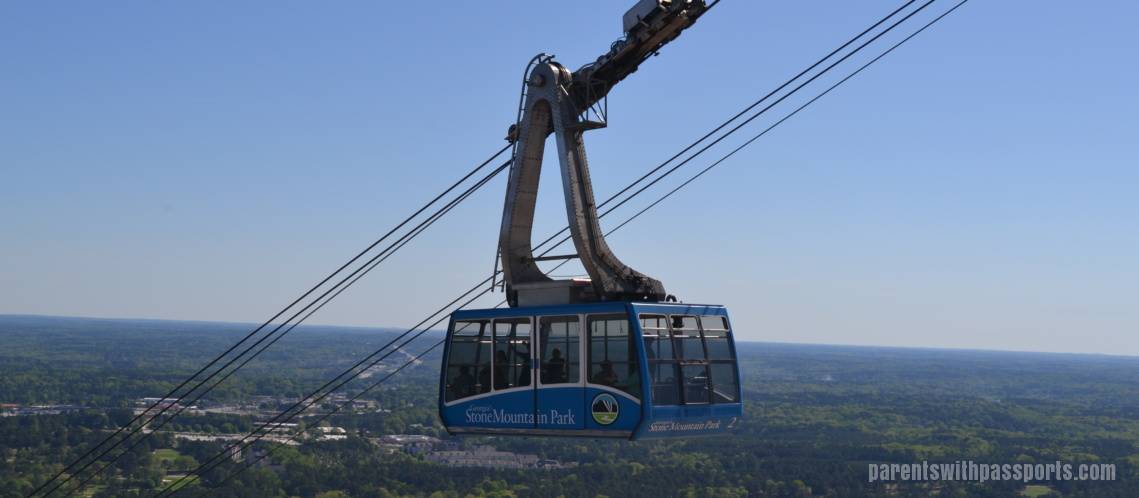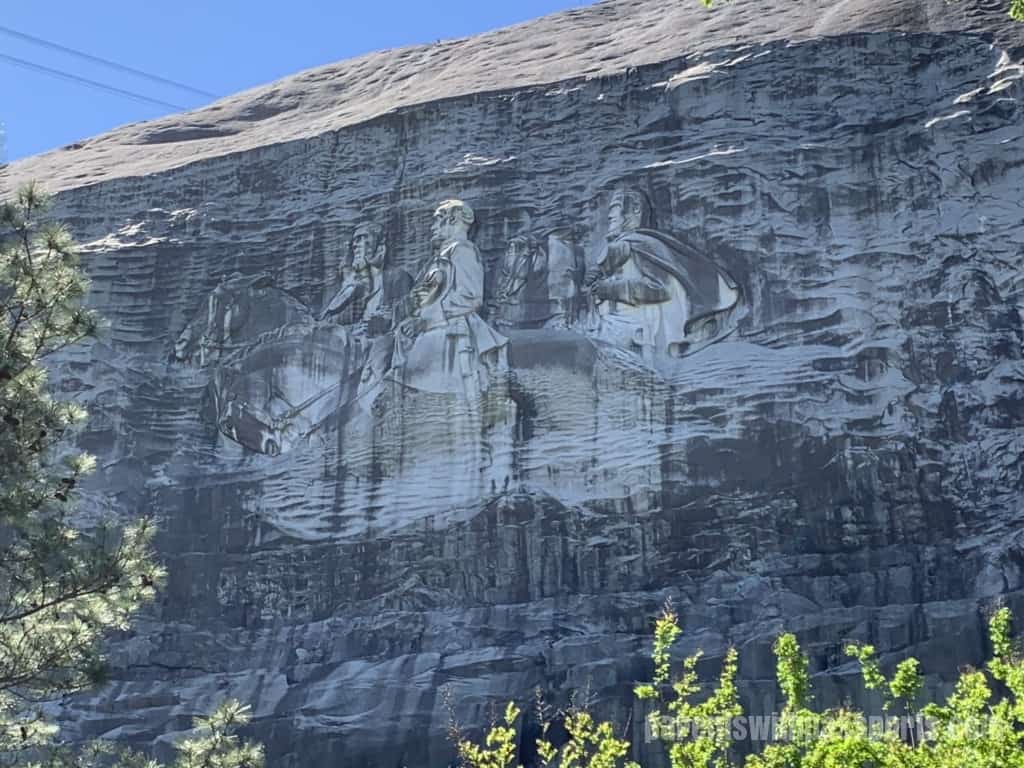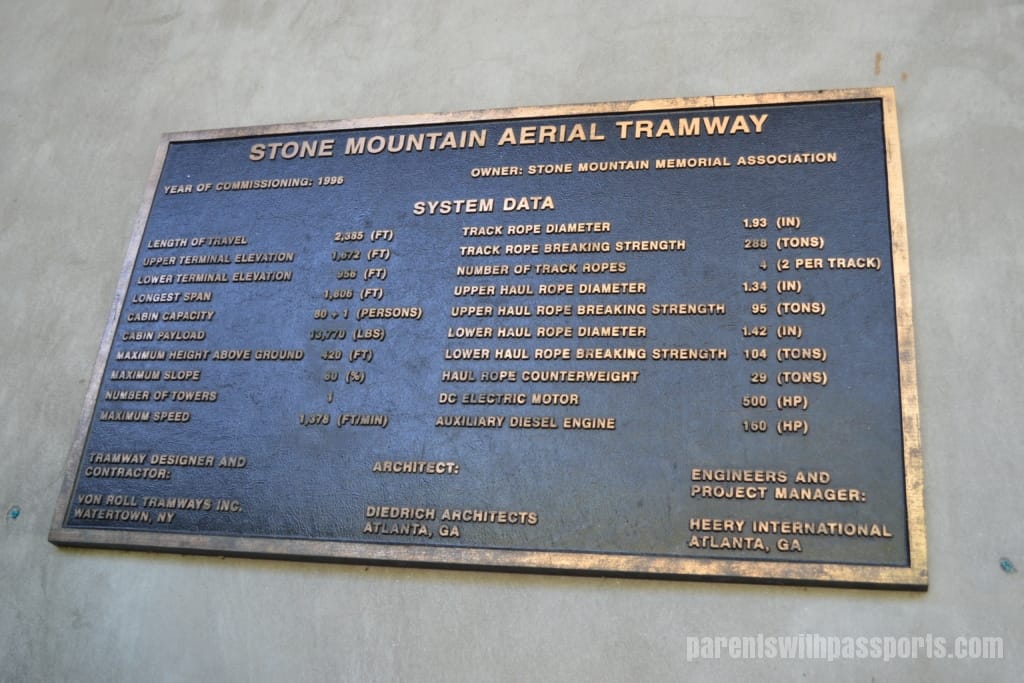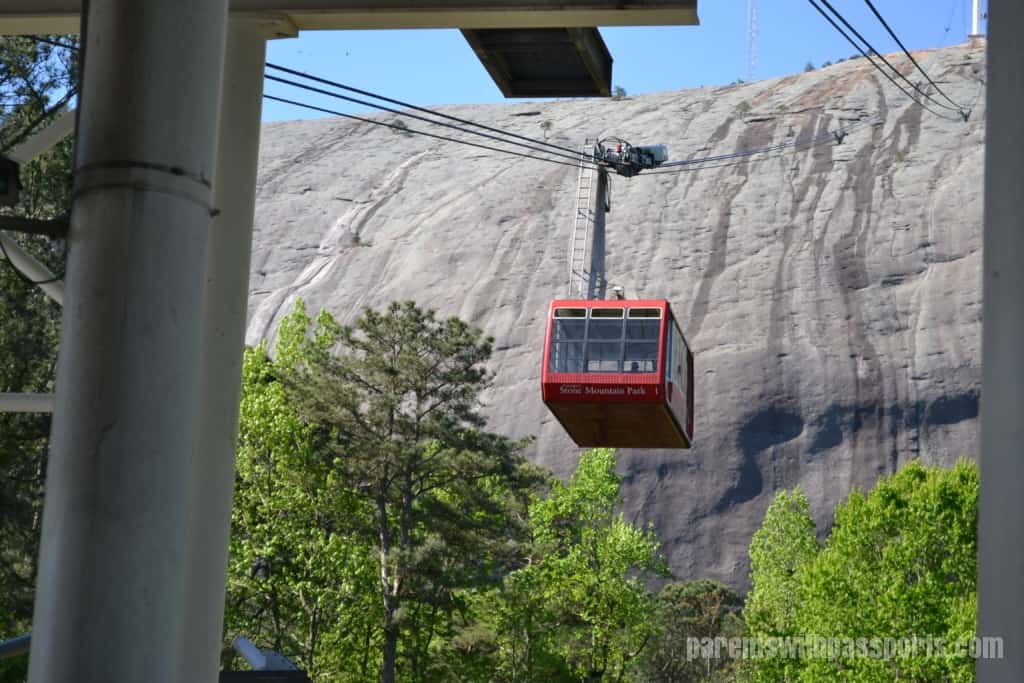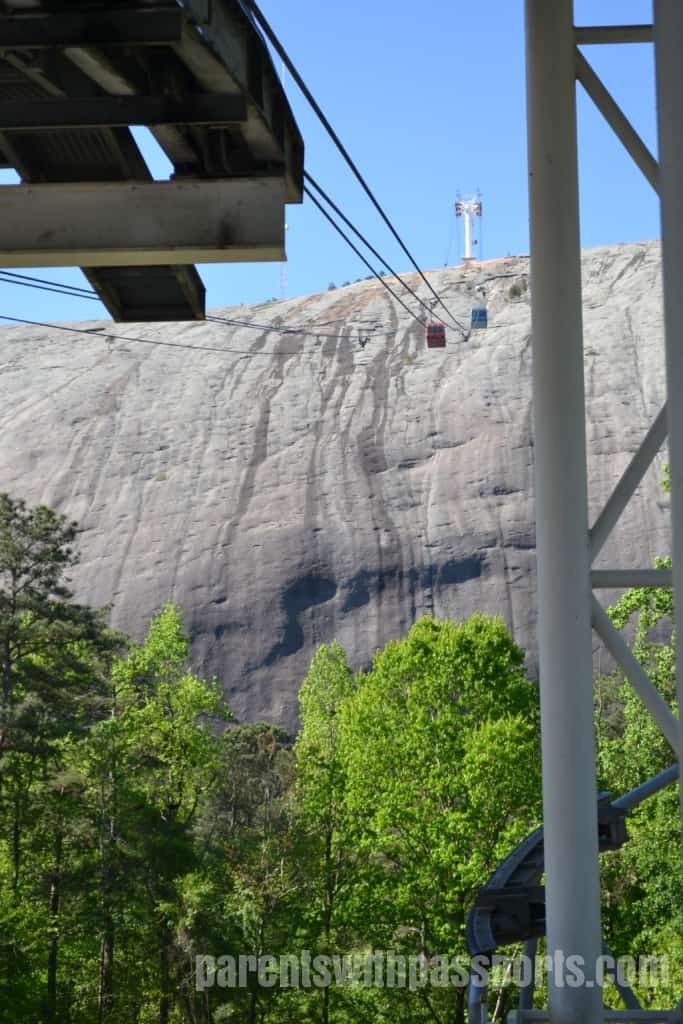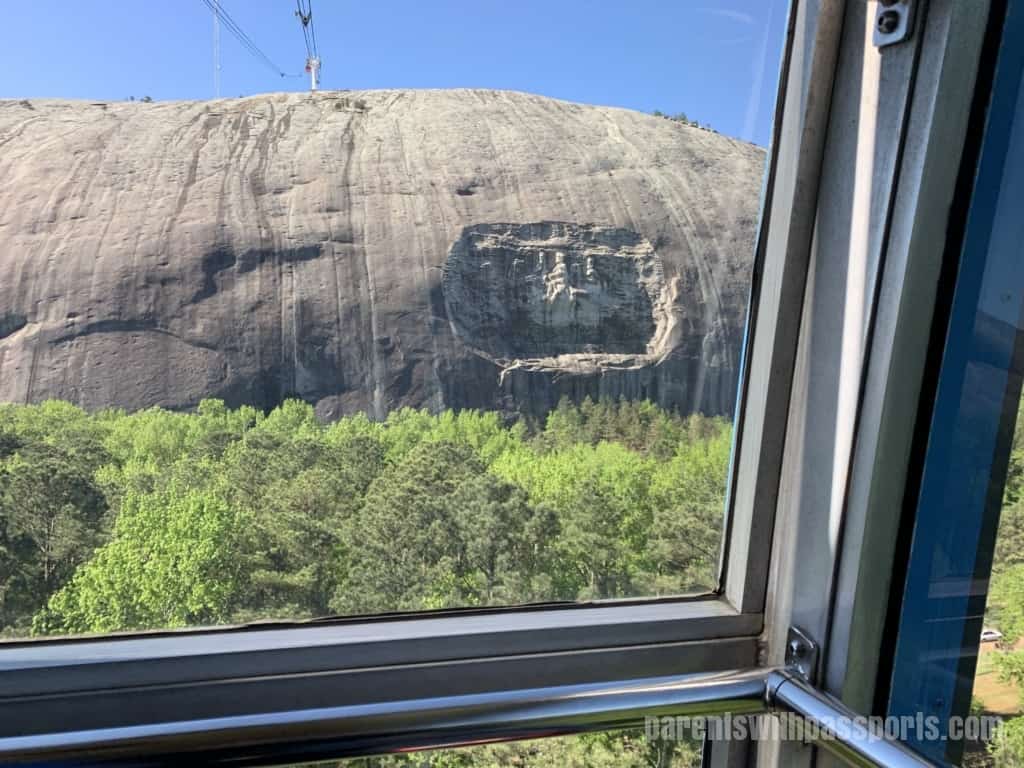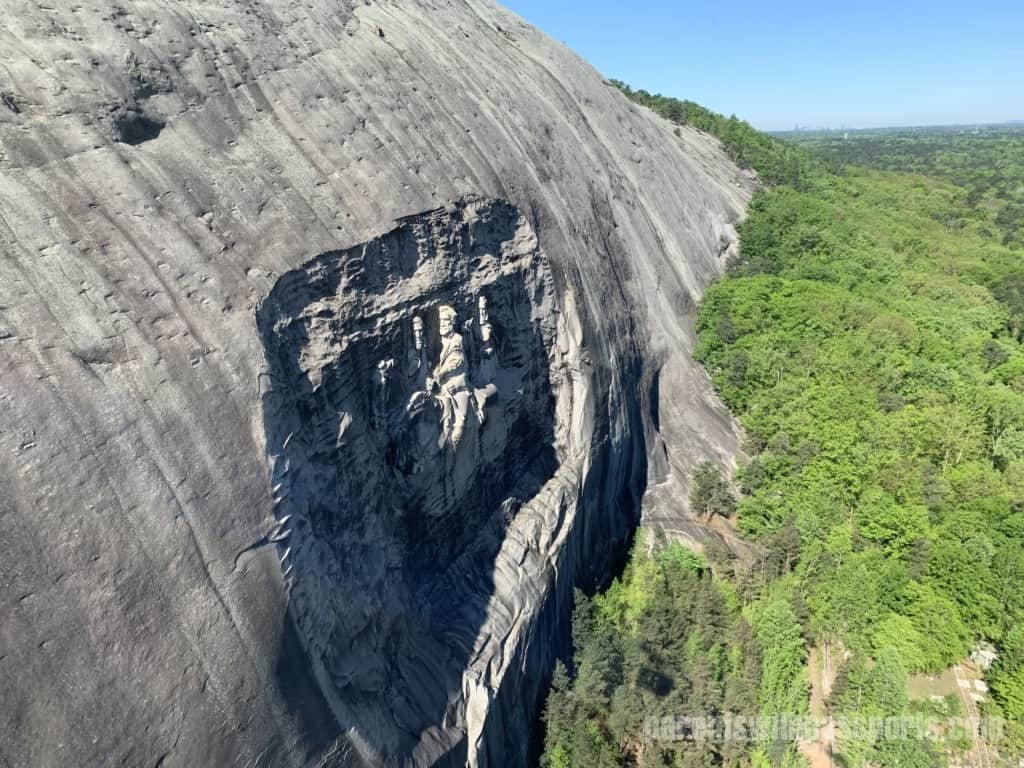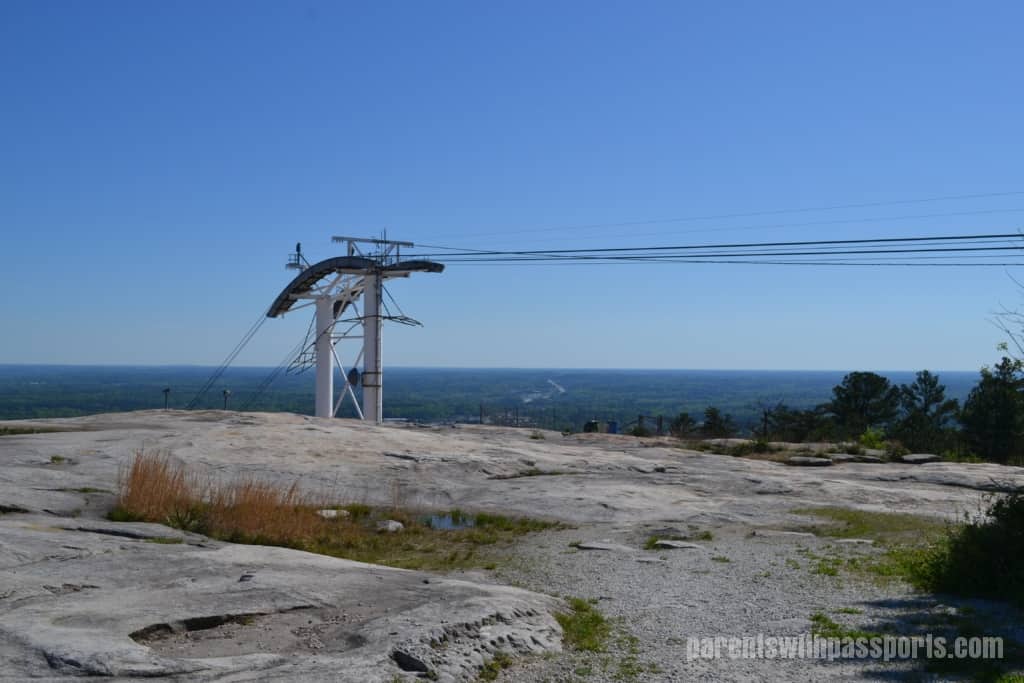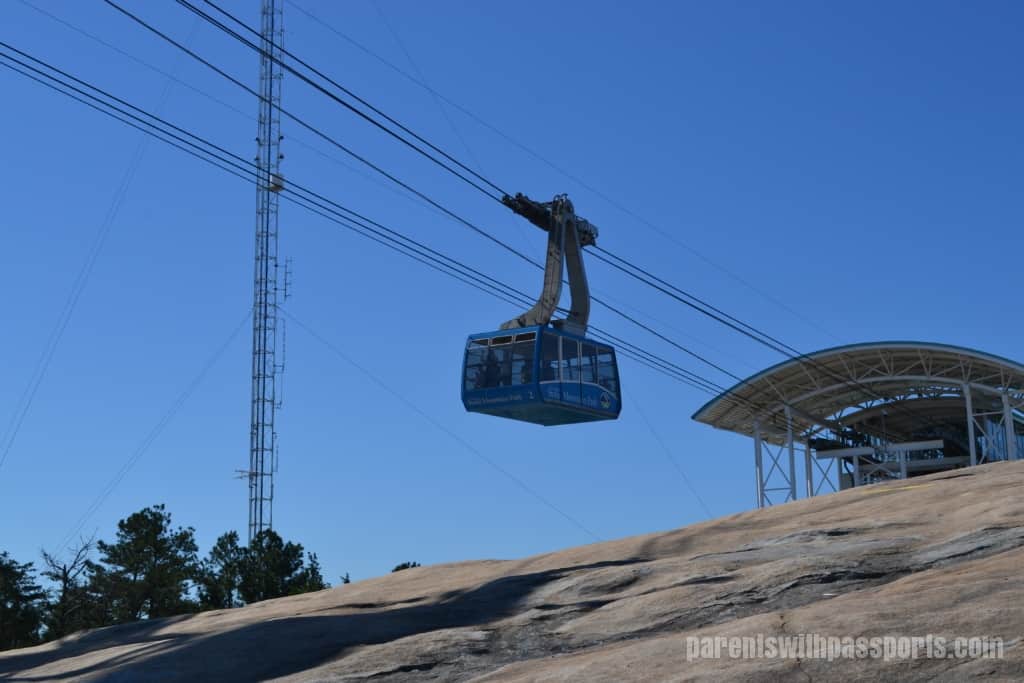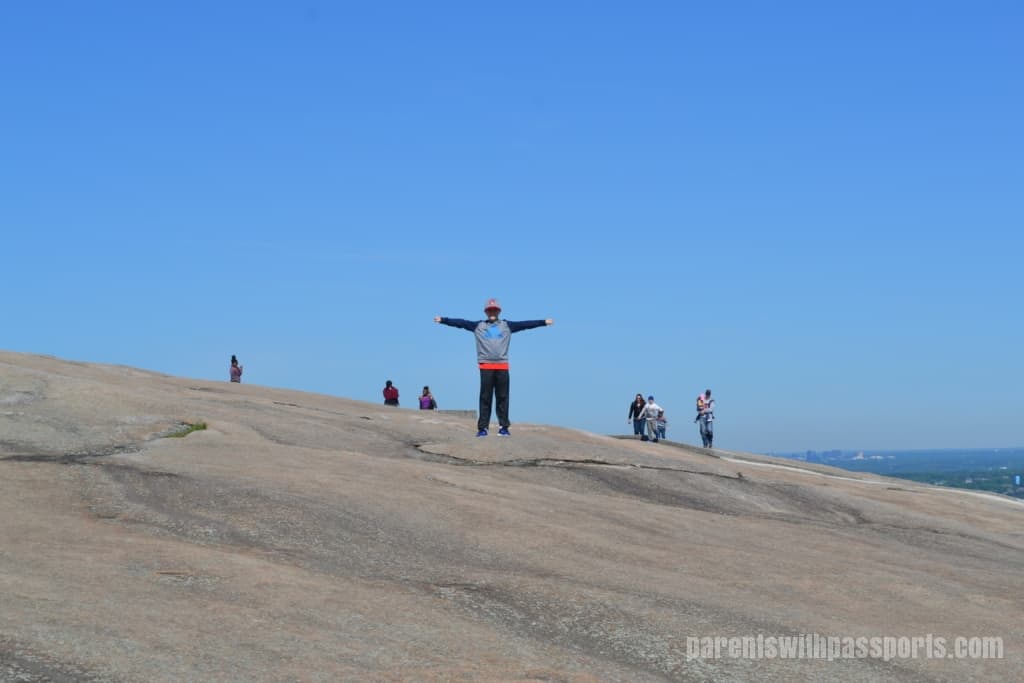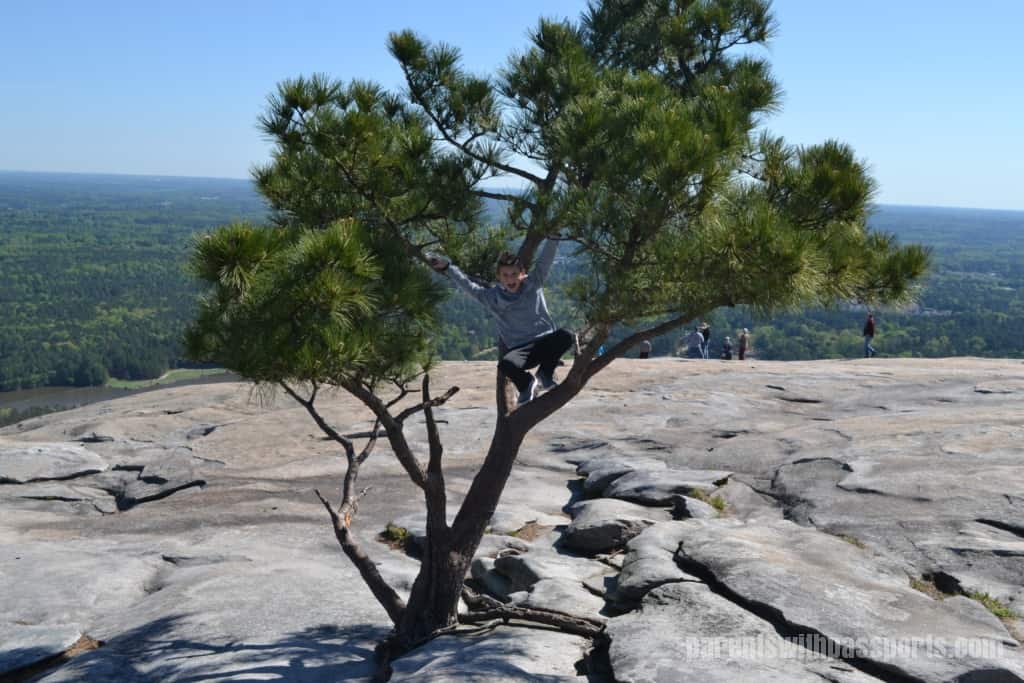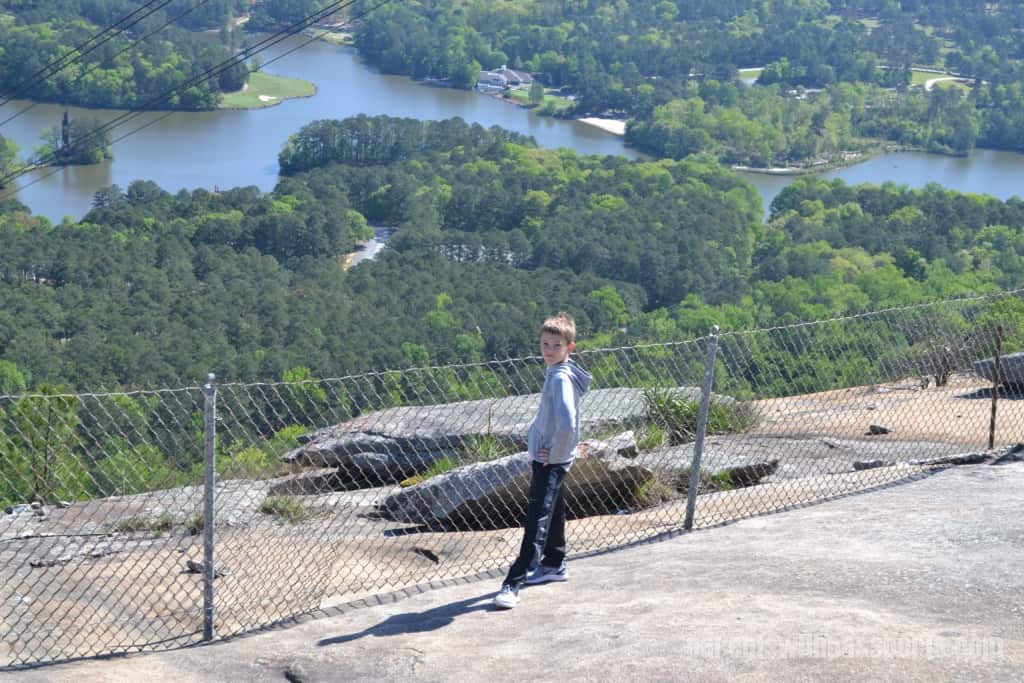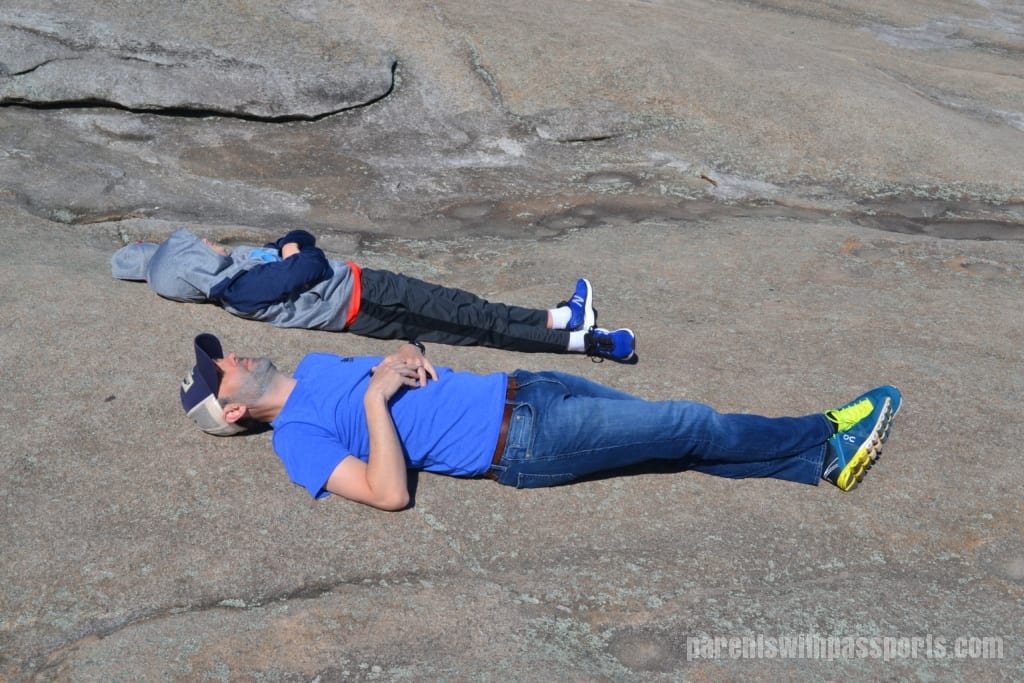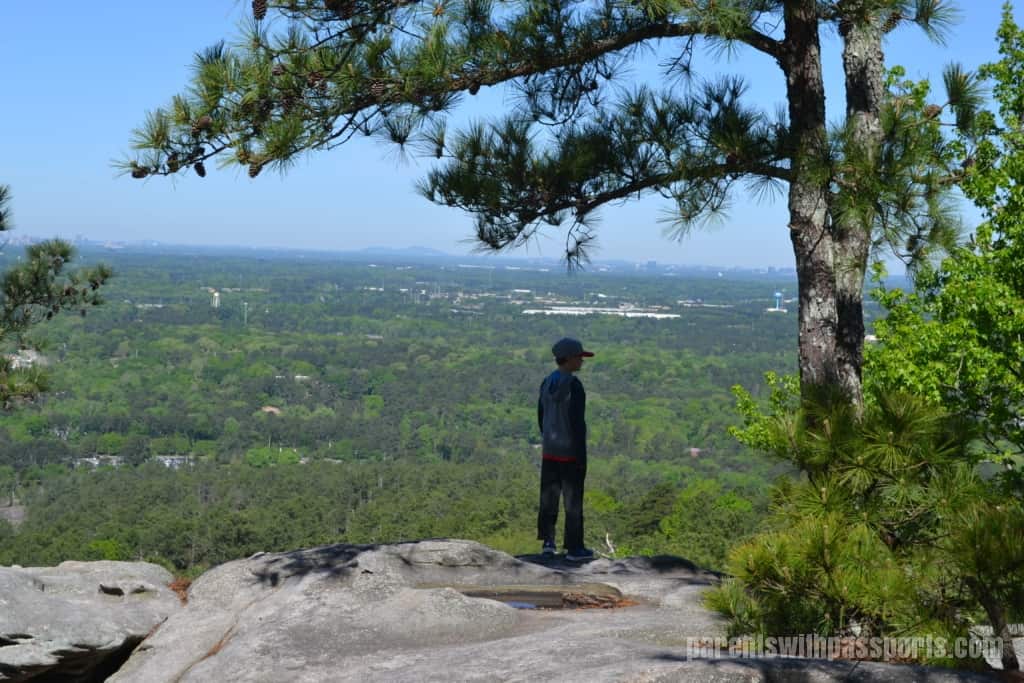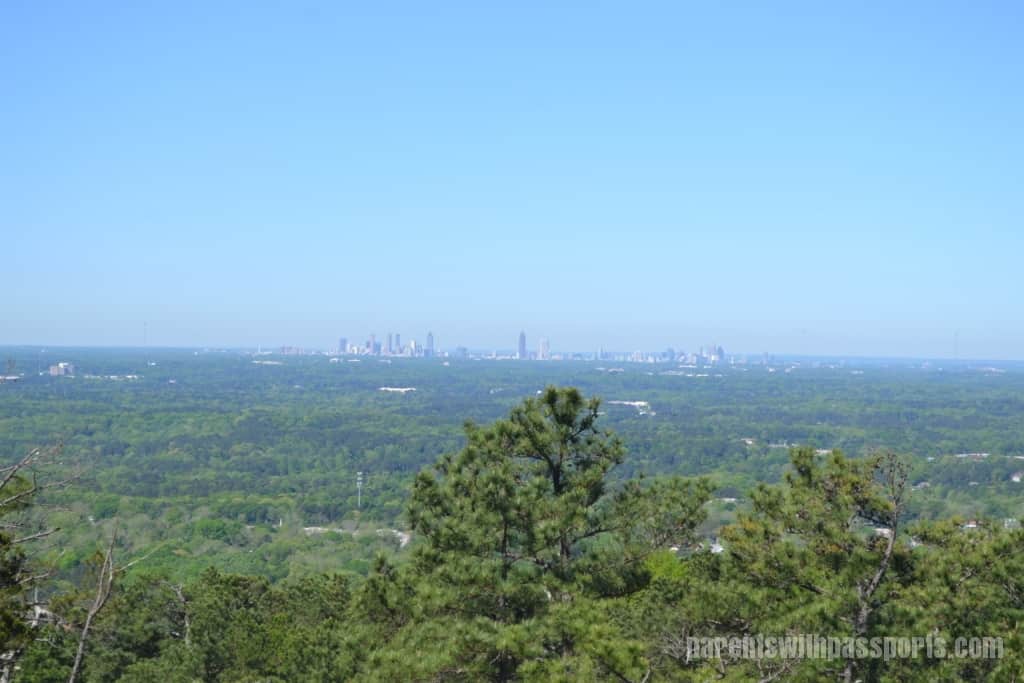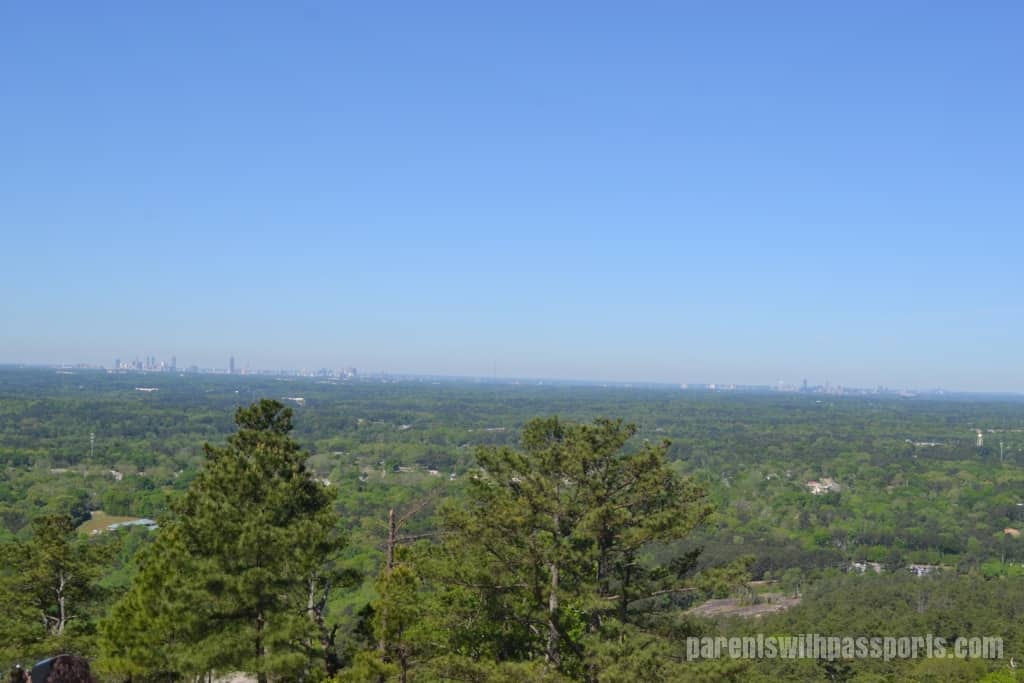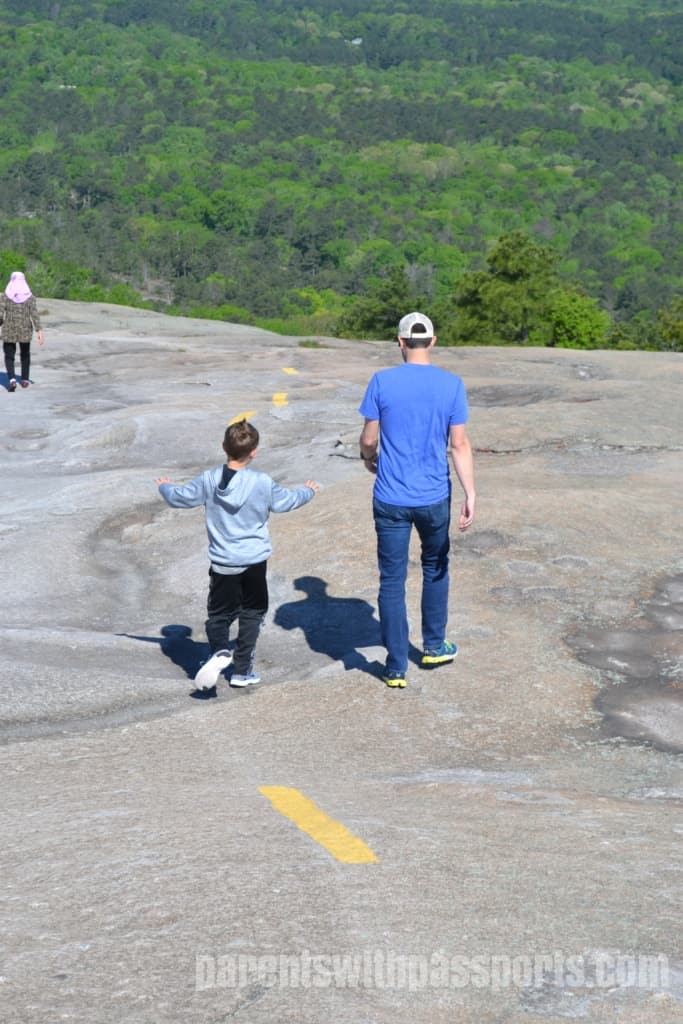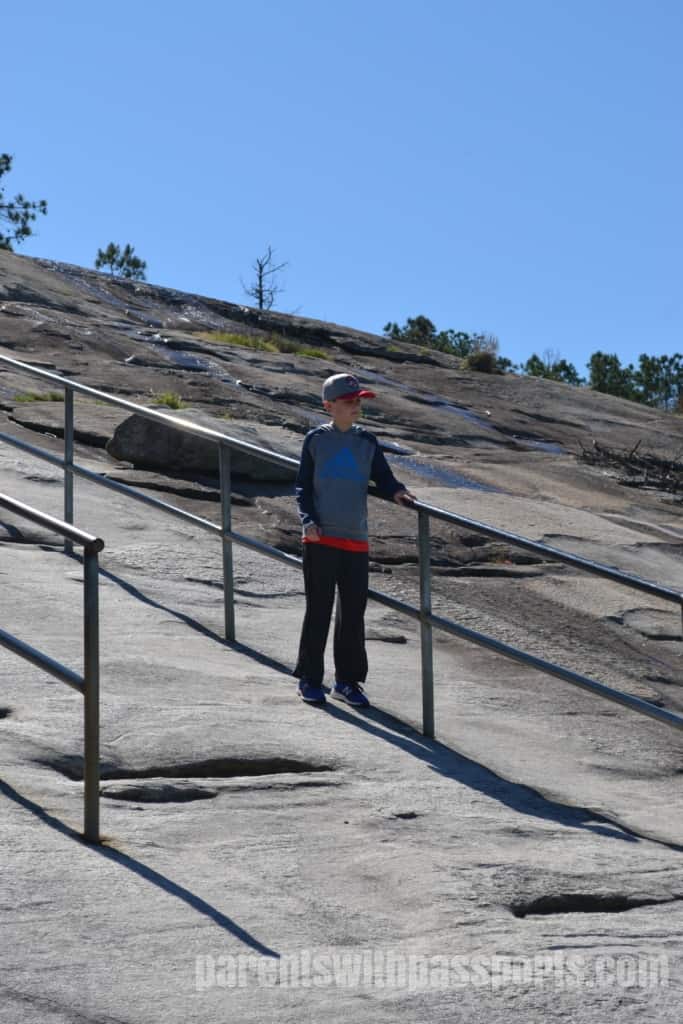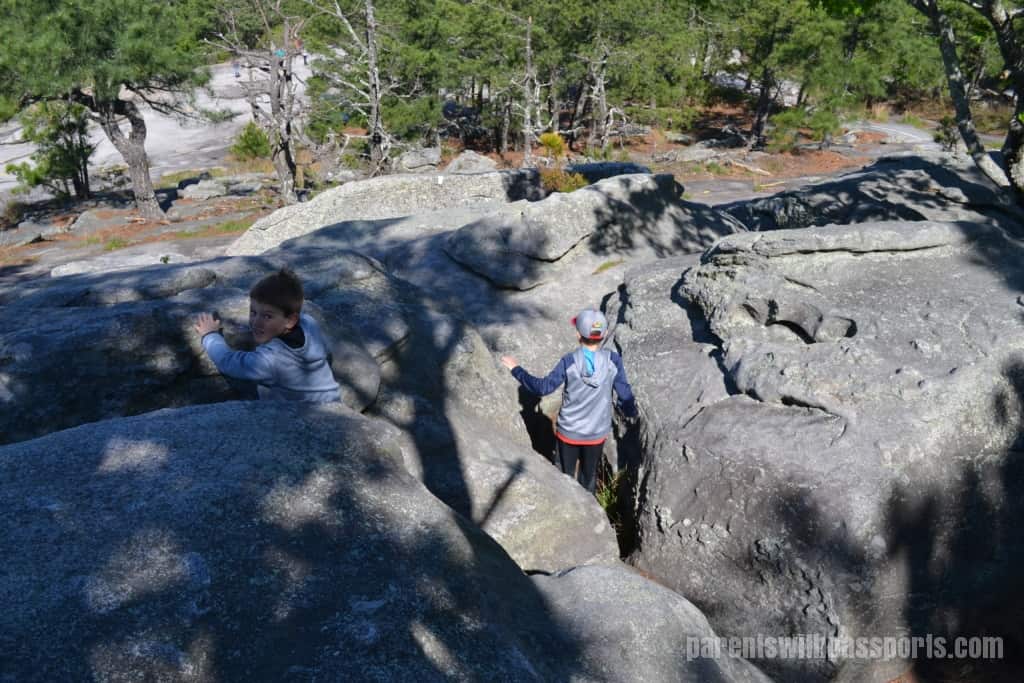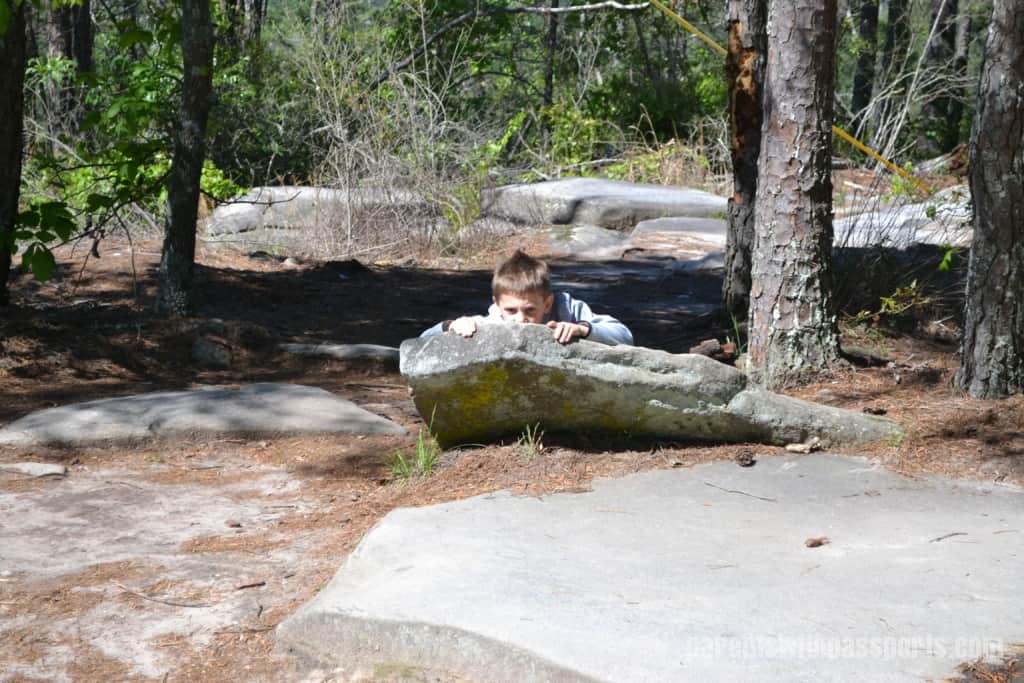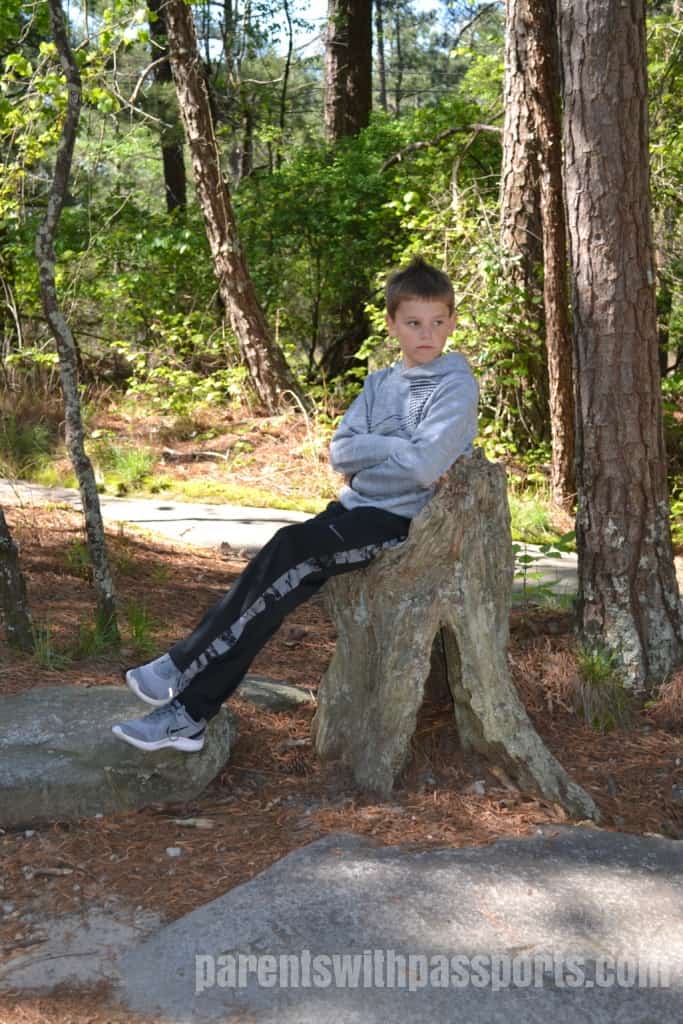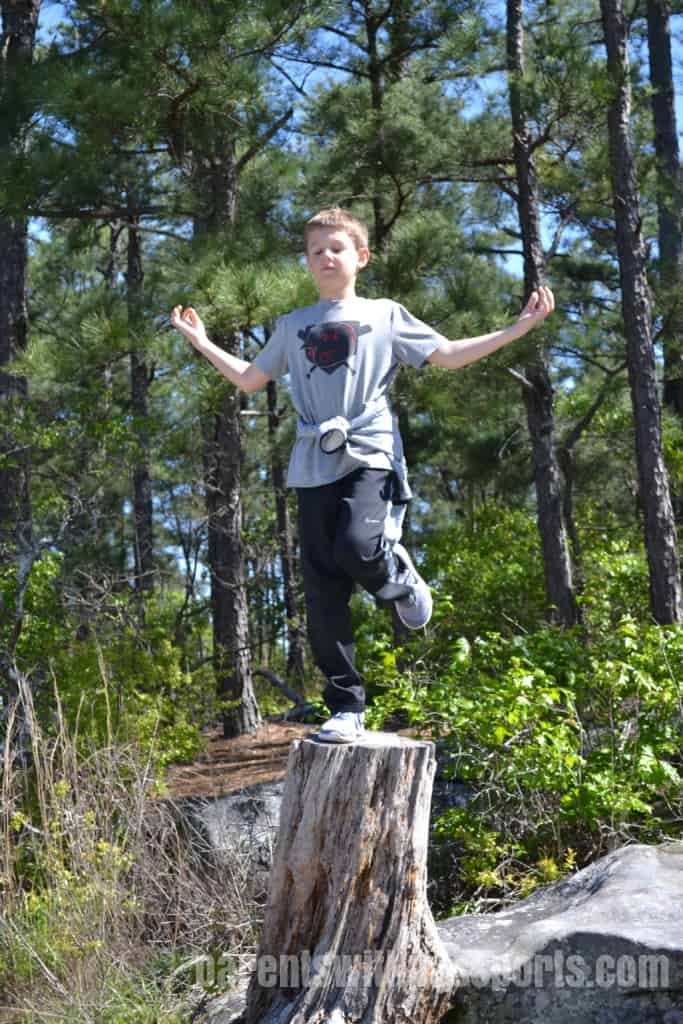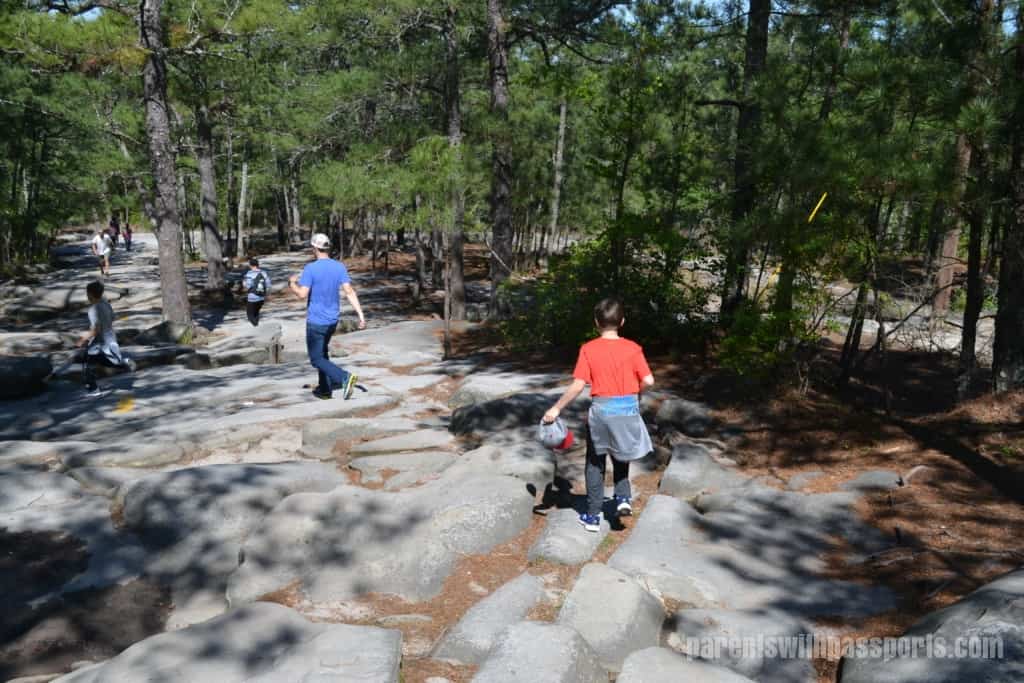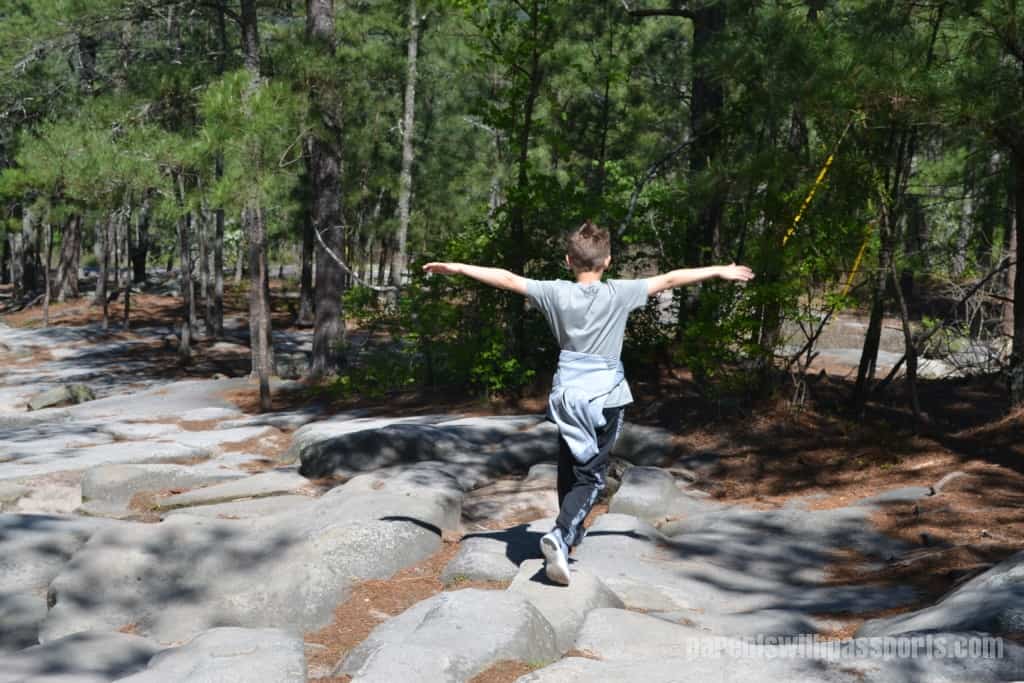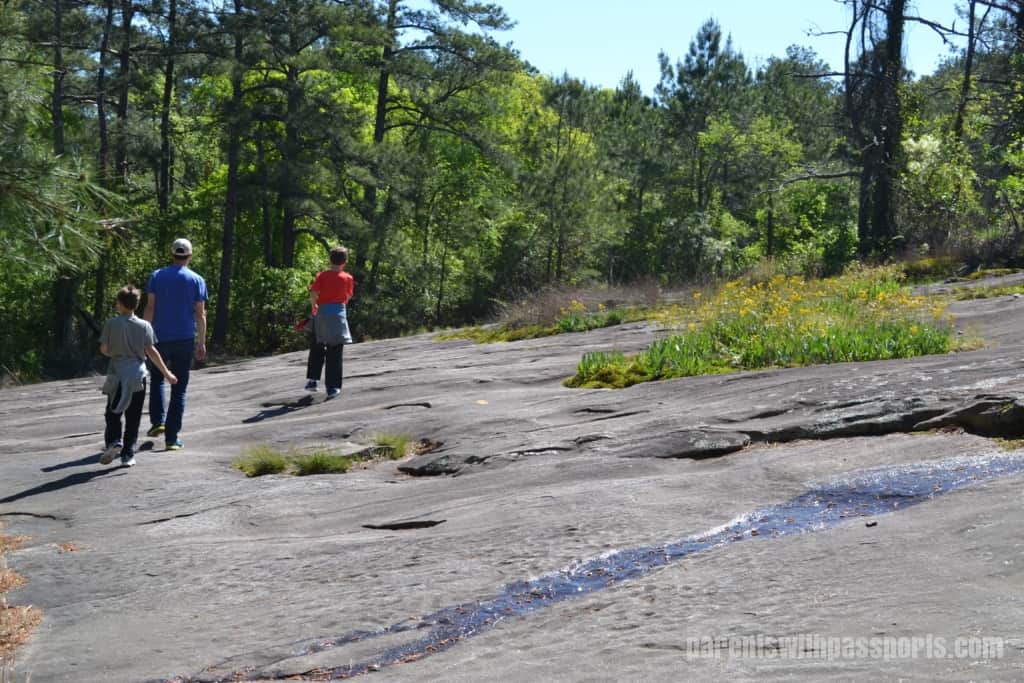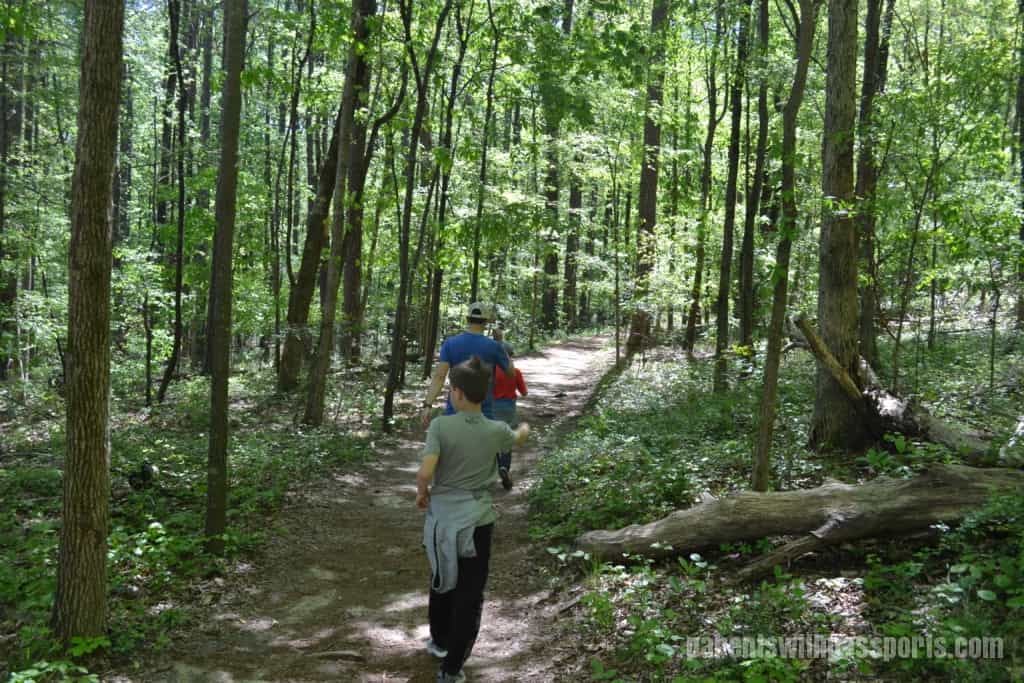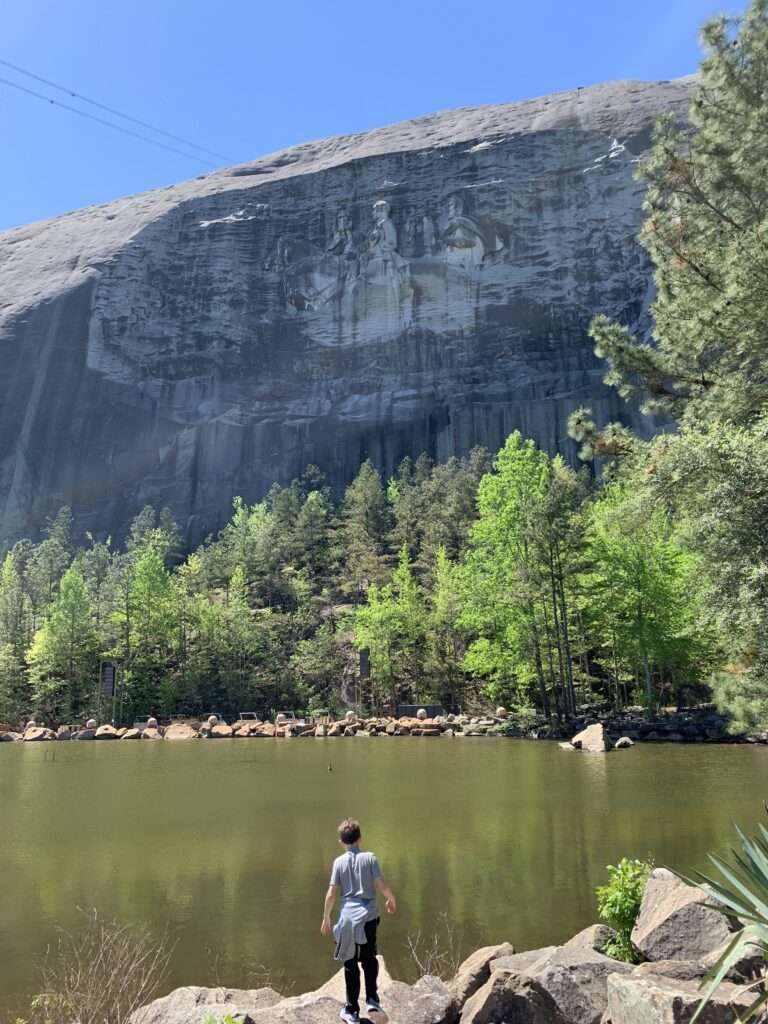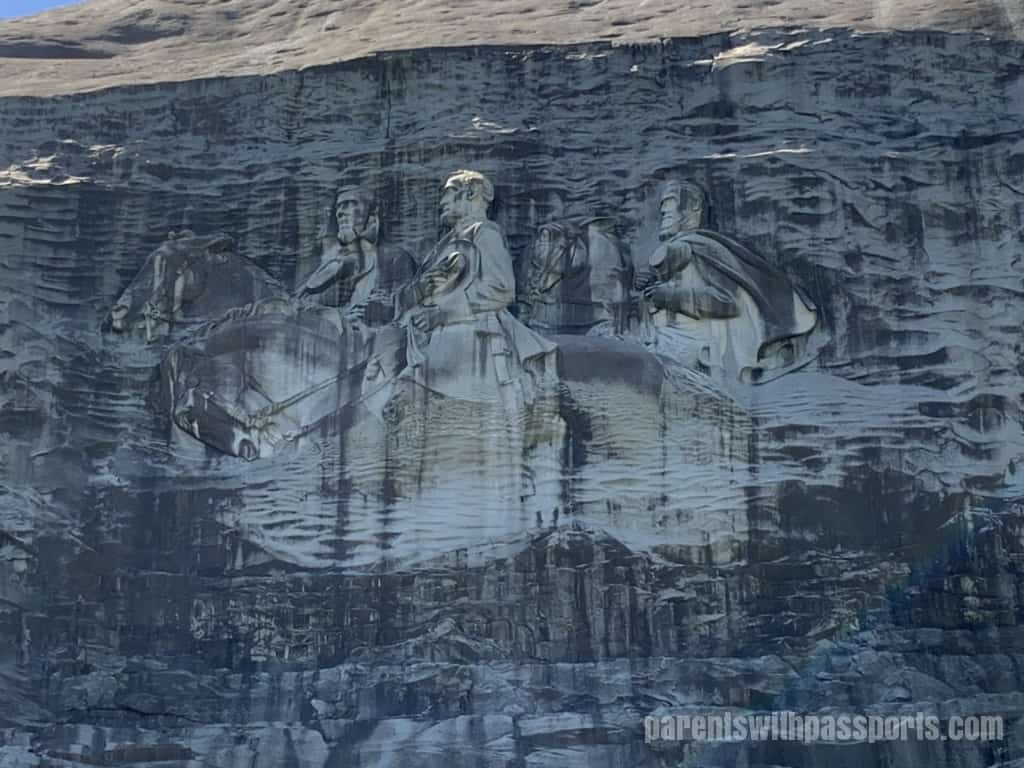After two and a half full days exploring the city of Atlanta, it was time to head home. We wanted to fit in one last activity before hitting the road and decided some time outdoors would be a good idea before the drive home. About 25 miles north-east of Atlanta, Stone Mountain fit the bill.
Georgia’s most visited attraction, Stone Mountain boasts 3,200 acres of natural beauty and a wide variety of attractions. Everything from mini-golf to a full-size locomotive to a laser light show can be enjoyed in the park. But our quick visit on the way out of town was simply to see the mountain and its Atlanta views.
Stone Mountain is a pluton, a giant dome of quartz monzonite formed 300-350 million years ago from crystallized magma. The igneous dome reaches 9 miles underground and 825 feet above ground. The largest bas-relief sculpture in the world is carved into its side.
Stone Mountain is at once a popular attraction and a controversial monument. The mountain has historical ties to the Klu Klux Klan and its record-breaking sculpture is in fact a Confederate memorial. The three men carved into the side of the mountain are Confederate President Jefferson Davis and Confederate Generals Robert E. Lee and Thomas “Stonewall” Jackson.
Stone Mountain certainly isn’t the only Confederate memorial that still stands today, although recent years have seen many of them torn down. But what makes Stone Mountain unique is not just its size, but its completion date. While the majority of confederate monuments were erected in the late 1800s, this one was carved between 1964 and 1972.
The mountain itself has a deep history in racism. It was originally owned by Samuel Venable, an active member of the Klu Klux Klan. For nearly fifty years starting in 1915, he allowed KKK meetings and annual cross-burnings to take place on the mountain. And in 1916 he deeded the north face of the mountain to the United Daughters of the Confederacy for the creation of a Civil War Monument. Although plans were worked on, funds raised, and some carving begun, the project was ultimately delayed for decades.
With the birth of the Civil Rights Movement in the mid-1950s, the state of Georgia, led by Governor Marvin Griffin, sought to purchase the mountain. This move was not, as one would hope, in the name of racial progress (although they did terminate the KKK’s rights to convene on the mountain) but essentially an effort to demonstrate and maintain white supremacy. The same governor who famously stated “So long as Marvin Griffin is your governor, there will be no mixing of races in the classrooms of our schools and colleges of Georgia” was instrumental in resuming the work on the monument. The Confederate carving was completed in 1972, a larger-than-life celebration of the legacy of slavery.
Coming fresh off the heels of our visit to the National Center for Civil and Human Rights, it was both shocking and unbelievable that this monument was erected after the Civil Rights Movement. While there is current debate over the appropriateness of Confederate monuments, a statue carved in the late 1800s can be more easily understood than one carved in modern times. This monument was essentially state-endorsed racism at a time when the country was trying to shift towards equality. A Confederate monument carved 42 feet deep into the side of a mountain is a permanent reminder of the civil rights work that still needs to be done.
Setting aside the controversy and mixed emotions elicited by the sculpture, we focused on exploring the natural wonder of the area. There are two ways to reach the top of the mountain – by foot or by aerial tram. We decided to take the tram up and walk down.
The Summit Skyride is a high-speed Swiss cable car that whisks you 825 feet upwards to the top of the mountain where views of Atlanta and the Appalachian Mountains await. The current aerial tramway opened in 1996 to replace an older cable car system, an update deemed necessary to accommodate the Olympics, which hosted tennis, cycling, and archery events there. The red cable car transported the Olympic torch on its way to the Opening Ceremonies.
Tickets are available for the tram only (vs. attraction passes) and can be purchased for a one-way ride ($8) or roundtrip ($12). (You must pay a $20 entrance/parking fee to enter the park as well.) The ride to the top is fast and steep and provides the first view of the Confederate carving. Sit on the right hand side (going up) to get the best view.
There are restrooms, a small gift shop, and a snack bar at the top of the mountain. Exiting the building, you are treated to a 360 degree view of your surroundings. We watched the tram take off back down the mountain and took in the stunning views.
It should be obvious that the entire surface at the top is stone but it was still striking to walk out onto it. There are a few trees and bushes that spring up improbably between cracks in the rock, but otherwise it is a barren surface. Smooth and sloped, I imagine it is slippery in the rain (and the chain link fence at the edge of the cliff did not inspire a lot of confidence).
We wandered around the top for a while, taking in the views in all directions. You can look back over the park and tramway, out towards the mountains in the distance, or check out the city of Atlanta. I was confused by the fact that there appeared to be 2 Atlantas. Apparently Buckhead is much bigger (and further away from downtown Atlanta) than I realized.
We spent a little over half an hour at the top and then started to make our way down. Since the mountain is made of granite, there are no cleared paths to follow. Instead, the path down is marked by a yellow dotted line painted on the rock. It is steep in spots – be sure to use the handrails where they are available.
The trail up/down the mountain is approximately 1 mile long. It’s steeper and rockier towards the top and becomes more lush and rolling as you go down. There were plenty of fun places for the kids to play and explore just off the path.
As we made our way down the mountain, it was painfully obvious that we were going straight down a different side of the mountain than the cable car had brought us up. This brought considerable stress to my oldest son (clearly NOT the one playing and meditating in the pictures above). After consulting the map several times, we did indeed confirm that we would come out approximately a mile away from where we parked. When we were almost at the bottom, we hung a right to take a shortcut on the white blaze trail (Cherokee Trail) and followed parallel to the railroad tracks to head back to the parking lot. (Alternately we could have continued to the base of the Walk Up trail, ending at Confederate Hall, and then followed the longer trail back to Skyride Plaza. But we definitely had one hiker among us that was not in the mood for that.)
We emerged from the woods at the lake in front of the Confederate Memorial Carving. Walking in front of the lake definitely gives you the best view of the carving. You really get a sense of how big it is. (We were shocked to find out it is larger than Mount Rushmore. We were also all unanimously less interested in seeing Mount Rushmore after this.)
The grassy area behind the lake is the Memorial Lawn and the site of the Lasershow Spectacular. Memorial Hall is behind the lawn and houses the Discovering Stone Mountain Museum (which we did not visit). There was some grumbling when it was determined that we still had a bit to walk before getting back to the parking lot but it was shorter than feared and we all made it out alive.
All in all Stone Mountain was a worthwhile stop. The tram was fun, the views incredible, and the hike down unique. The Confederate stone carving is worth seeing. Regardless of the content, you can appreciate the effort that went into the carving and marvel at the result. It is a little mind-boggling to think about how this was accomplished – a monument of this size (90 feet by 190 feet) and detail carved 42 feet deep into a side of a mountain 400 feet above ground.
